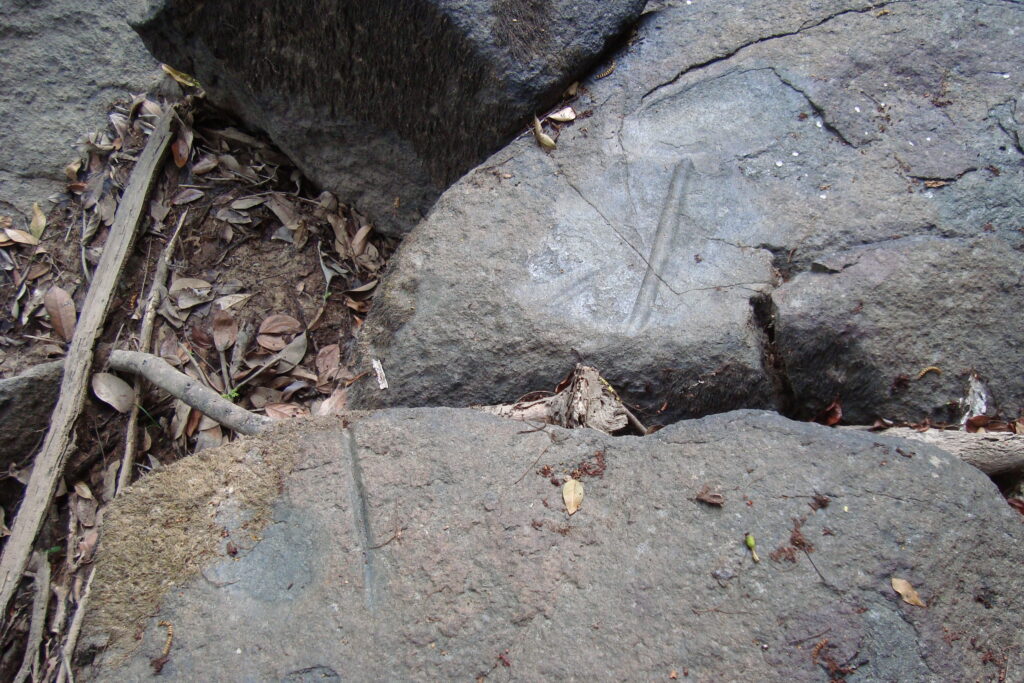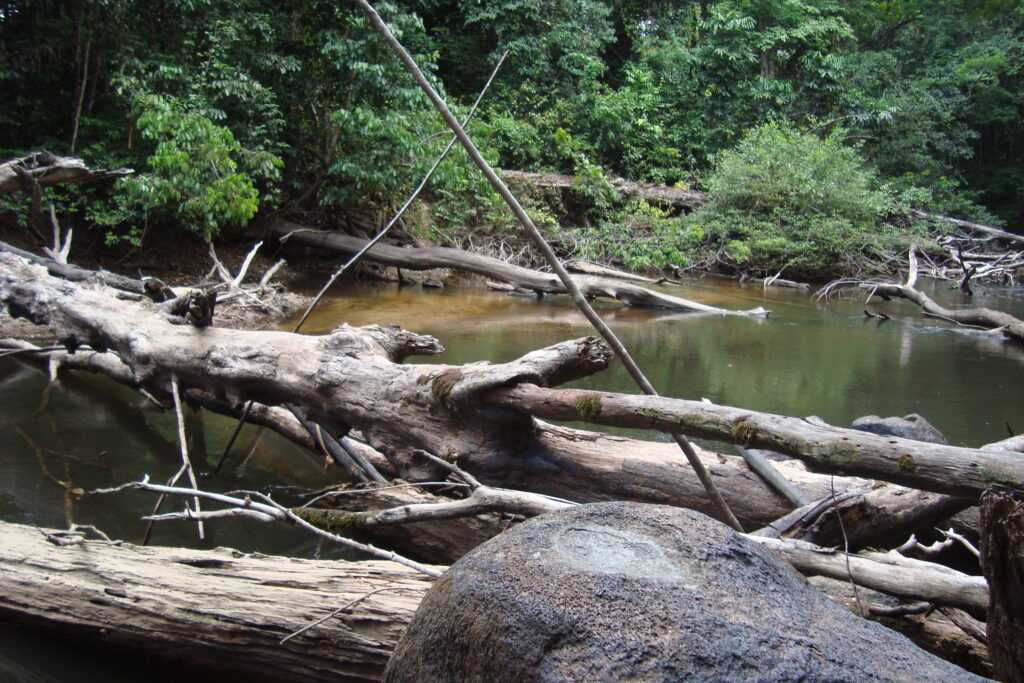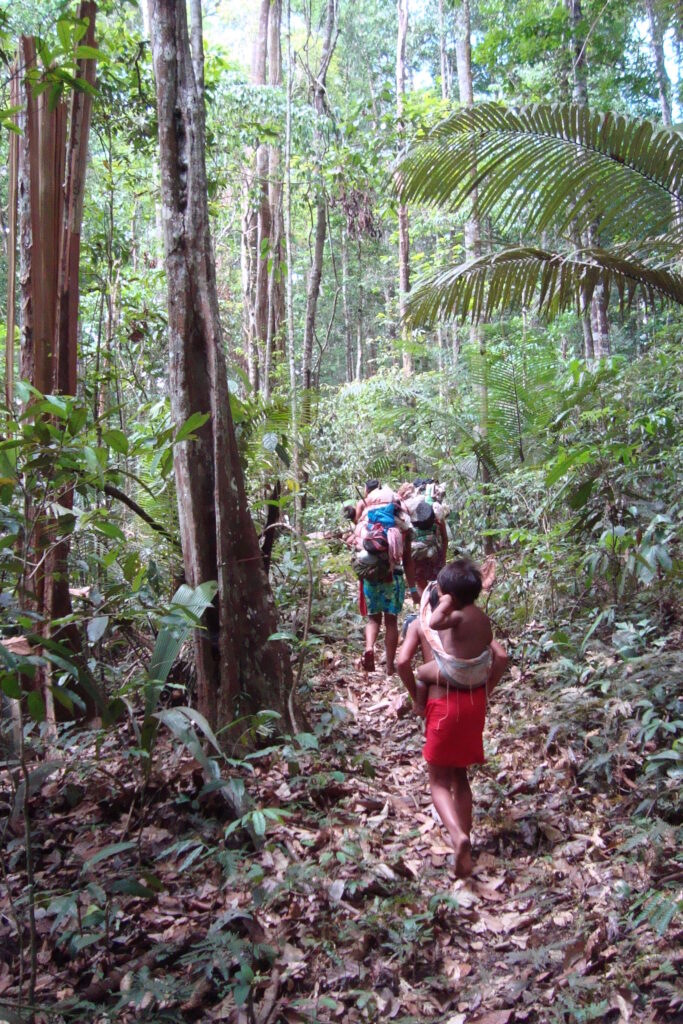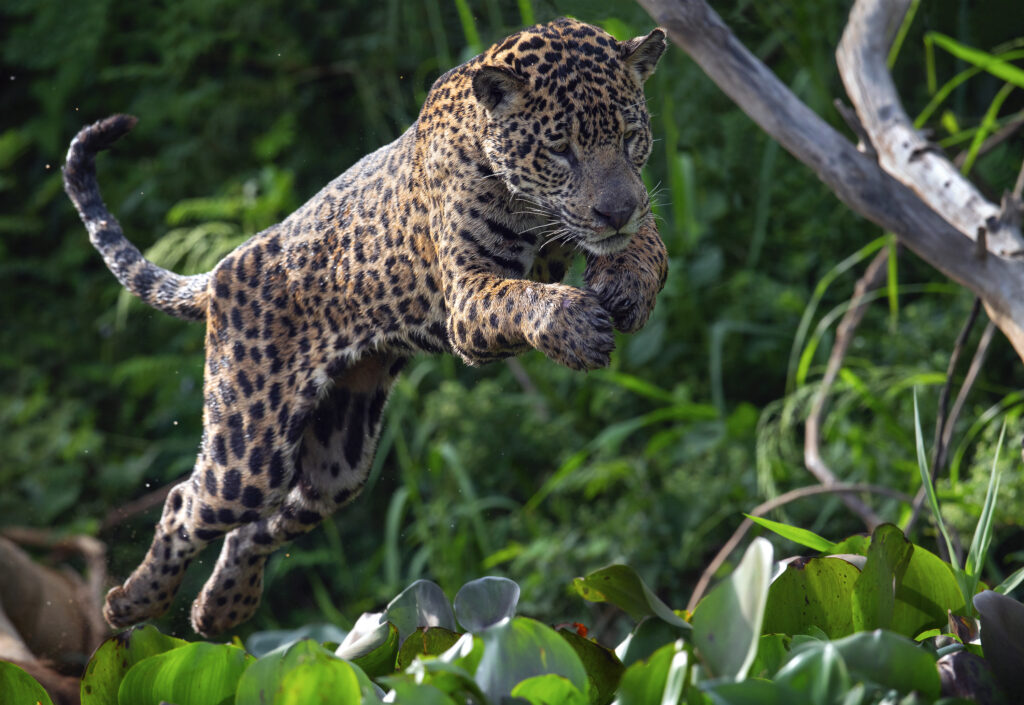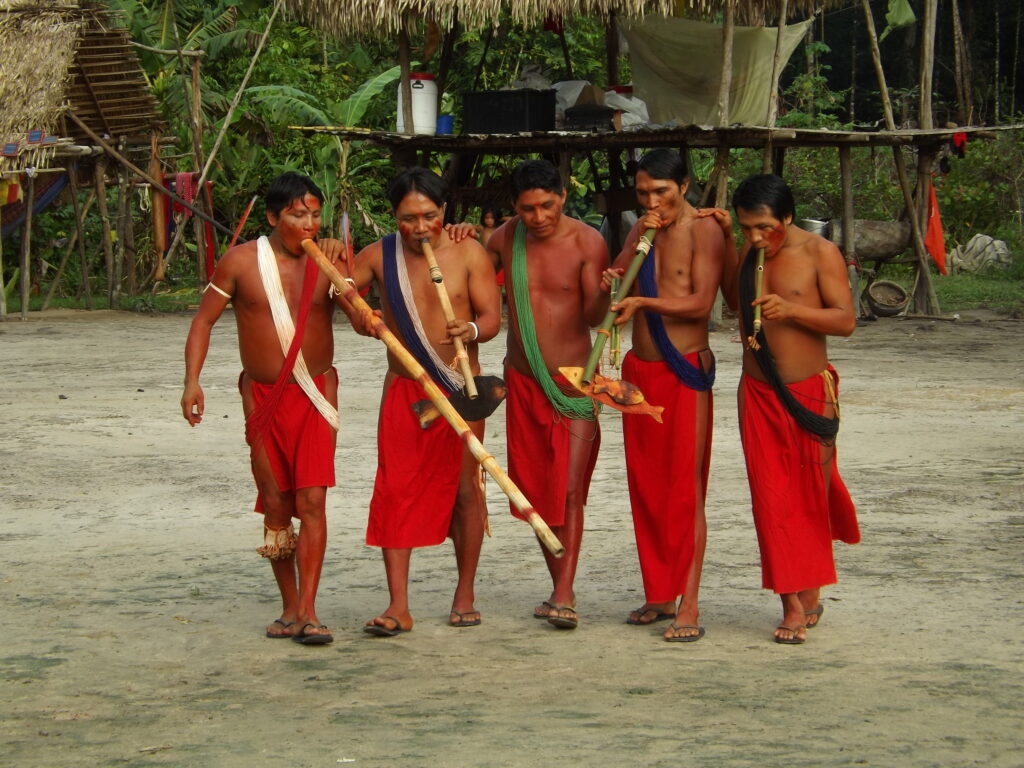Finding Footprints Laid at the Dawn of Time
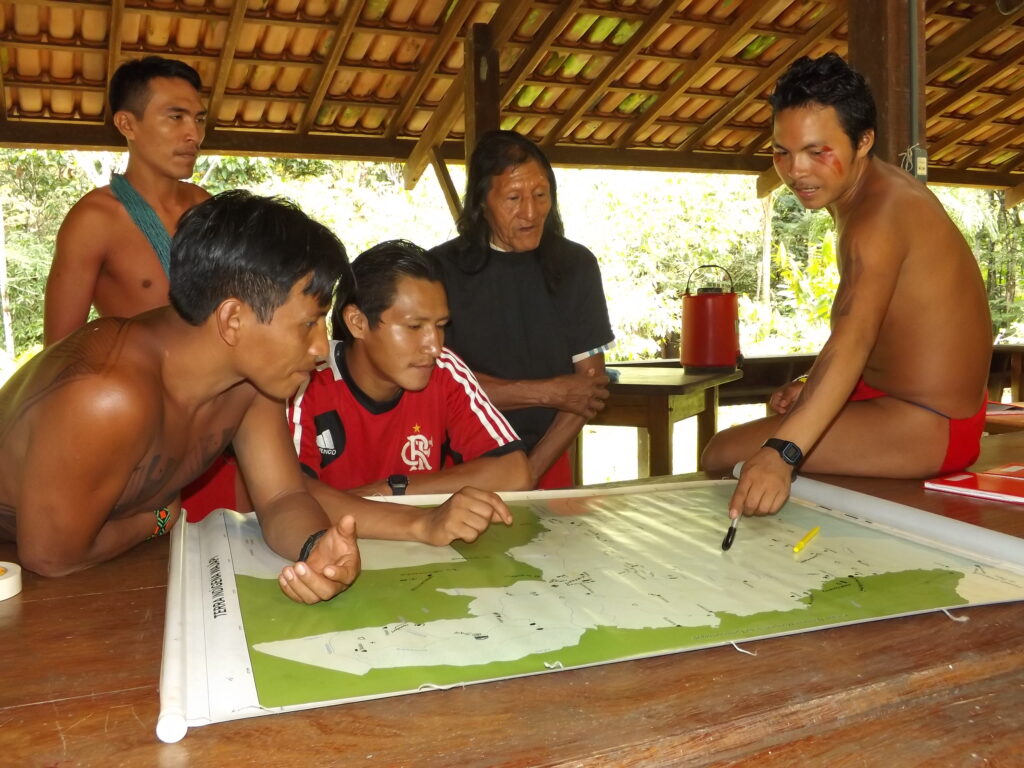
FOOTPRINTS FROM INFANT EARTH
Sitting on a log, in the ever-present shadow of the Amazon forest, Roseno Wajãpi and I shared pieces of cassava bread and chunks of smoked fish. He told me about the beginning of time.
Earth’s crust was recent, still in formation. Stones weren’t yet solid. Creator Hero Janejarã hiked between villages and sat down to rest at some spots. The rocks hardened, preserving both his footsteps and the imprint of his buttocks. Like many members of his community, the Wajãpi Indigenous people, Roseno can recognize these still-existing traces of Janejarã on the landscape.
Earlier that day, I had noticed some of Creator Hero’s footsteps by the river, but I interpreted the shallow, foot-long grooves differently. As an archaeologist, I assumed the smooth divots came from past people grinding cobbles against a rock surface to make stone axes.
The Wajãpi had invited me to map archaeological sites in their territory. I was excited. It was the first time a university-trained archaeologist would work within the Wajãpi Indigenous Land, spanning 1.5 million acres of nature reservations in the far northern Brazilian state of Amapá.
But during my first visit, our different understanding of the grooved rocks set me back. The Wajãpi already knew of my “archaeological finds”—the footsteps of Creator Hero from the beginning of time. What could my archaeological knowledge possibly offer to such a vast cosmological wisdom?
Today, 15 years after that first attempt at intercultural exchange, the Wajãpi and I are still collaborating. It turns out my skillset helps map places and histories that are significant in Wajãpi Oral Traditions. This aids land stewardship and the passing of knowledge from elders to youngsters. Together, we developed a research program that braids archaeological science and Wajãpi knowledge.
In recent years, hateful political discourses have gained steam in Brazil, fueled by far-right politicians who jeopardize Indigenous self-determination and land rights. Our collaborative research helps foster intergenerational bonds within the community—essential for sustaining and empowering Indigenous peoples in Brazil.
FIRST TRIP TO WAJÃPI TERRITORY
In Brazil, 1.7 million Indigenous people make up more than 260 ethnic groups, speaking some 160 languages. The Wajãpi count 1,600 members. They are the only speakers of Wajãpi, which belongs to the Tupi family, a large group of related languages indigenous to South America.
As a university-trained archaeologist, I have learned that Indigenous people have inhabited the Amapá region of the Amazon for at least 6,000 years. The historical evidence suggests the Wajãpi arrived later, though; in the 1700s, they migrated from the Xingu area in Southern Amazon, escaping the expansion of colonizing settlers.
Seven days into my first trip to Wajãpi territory in 2009, we were crossing the Inipuku River, using a fallen tree as a bridge. Before stepping onto the trunk, I spotted the grooved rocks, a common archaeological feature I had seen multiple times during my career.
There I was: all excited, snapping photos, scribbling notes.
As the group forged ahead, I didn’t even think of asking my Wajãpi partners about the grooves.
We were heading to one of the farthest villages in the territory. Having already covered around 30 miles, we still had another 20 to go, three more days of hiking under the canopy of the humid Amazon forest. By the journey’s end, we trekked nearly 100 miles, nearly the distance from New York City to Philadelphia.
Along the trail, Felipe Garcia—a historian who had previously worked with the Wajãpi—gently advised me about my lack of attention to Wajãpi knowledge. Felipe had asked our guide Roseno about the grooves and told me to do likewise.
About three hours later, when we stopped to rest, I asked him.
Roseno explained how the grooves formed in Earth’s early days, when stones were still soft and Janejarã walked on them.
Just like an archaeological explanation, his account connected the material traces to events that formed them. Roseno’s story conveyed assumptions he had learned with his parents and grandparents. The story I told about the grooves reflected different assumptions that I had learned with my professors and more seasoned colleagues.
Both of us were making sense of material traces of the past, creating explanations based on our teachings and experiences. Both of us drew from robust systems of knowledge shared by our elders. I realized I was not the only one capable of drawing conclusions about archaeological features. Now I view both Wajãpi researchers and myself as archaeologists. We just draw from different backgrounds.
TRACES OF CREATOR HERO
Over the days to come, Roseno shared more about Creator Hero. Janejarã provided people with tools, food, everything. Eventually tiring of humans’ complaints and requests, he left Earth to live in the sky.
In addition to the rock grooves, his footsteps, Creator Hero left other traces. The Wajãpi recognize bamboo patches in the forest and plants growing in bedrocks as Janejarã’s ancient crops. The jaguar’s ability to climb and jump from trees also comes from Janejarã: The hero invited everyone to try these maneuvers in the beginning of time, but only jaguars did. If humans had accepted the invitation, we would have arboreal agilities too.
I came to learn from Wajãpi people that rocks, plants, and animals all carry marks from ancient times. Sometimes, as with the rock grooves, the Wajãpi traces of the past correspond with those I learned from archaeological training. In other cases, as with jaguar behavior, Wajãpi traces are beyond my archaeological toolbox.
FRUITFUL COLLABORATION
As we built space to share understandings over the years, we started bridging the gap between our different sets of knowledge. Together, we record every mark of the past as a relevant piece of history on Wajãpi Indigenous Land.
Academic scholars benefit from new data in an area never surveyed before by university-trained archaeologists. But the work also produces knowledge relevant for the Wajãpi people: I share with them information about federal laws related to cultural heritage and environmental protection. We document their places and histories through GPS mapping, audio recordings, drawings, and photographs. These are communicated through maps, booklets, and public meetings.
We approach material traces from distinct backgrounds; we misunderstand each other often. Yet failure to grasp intended meanings fuels our conversations and collaboration. Although we carry different assumptions about the past, we share a common interest in telling stories grounded in objects, places, and beings such as jaguar.
Indigenous people in Brazil have suffered and continue to face violent denial, silencing, and murder. It was only in 2008 that Indigenous history became an official curricular content for K–12 education in Brazil. Suppressed from national identity, indigenous perspectives were hardly heard beyond villages before the curricular change and other efforts to spread awareness.
Collaborative research can help Indigenous people document their past, amplify their present voices, and ensure their future sovereignty.


























